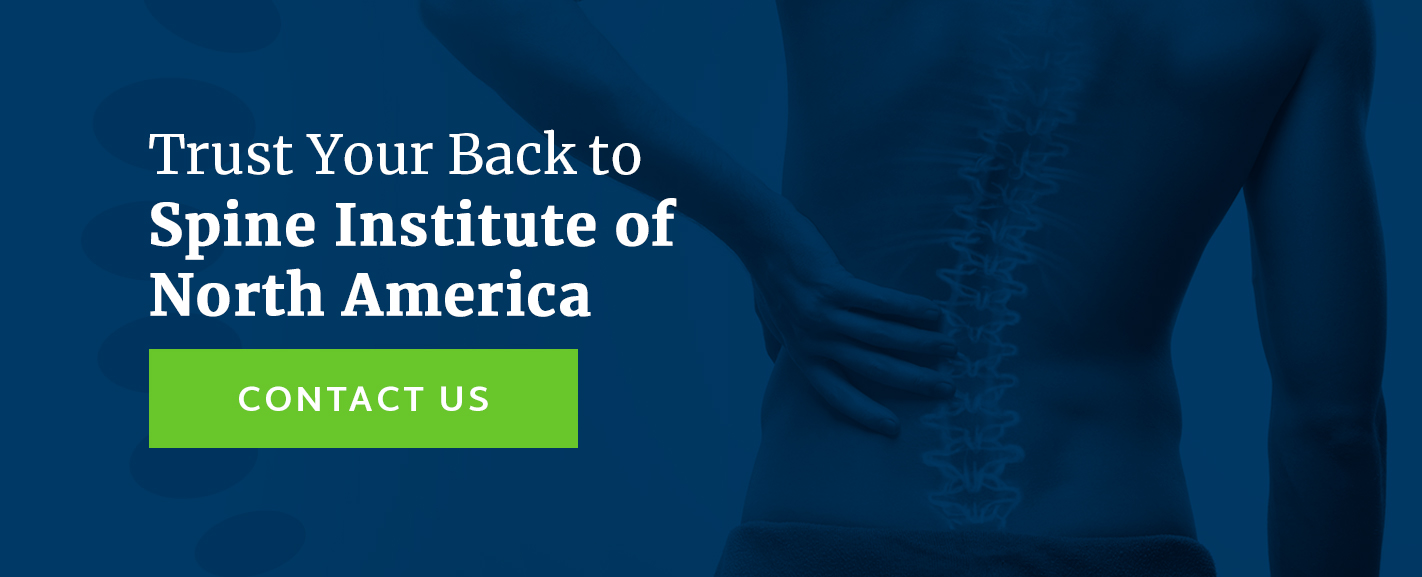Get to Know the Parts of Your Spine
This content was medically reviewed by Baher S. Yanni, MD, on February 5th, 2017.
For how important the spine is in the human body, it’s sometimes surprising how little individuals actually know about their spine. Your spine is made up of many different bones that support the majority of weight in your body and also house your spinal cord, the electrical signal highway that allows the brain to communicate with the rest of the body. Because the spine is made up of so many different pieces and tissues, it’s easy to damage just one small part of the spine and feel effects throughout the body. Spine pain is no joke and can lead to debilitating problems throughout your life. Understanding where your spine pain is originating from can help you to seek appropriate treatment. If you’re interested in getting to know the various parts of your spine, keep reading.
Each segment of your spine is known as a single vertebrae. This bone is one of 33 bones that interlock together to form the spine. These bones look like they are made of two distinct pieces, one being a circle that is stacked and the other being a boney, spurred loop that connects to the backside of the main spinal column circle. In between each of these circular bones that are stacked together sits a piece of soft tissues known as an intervertebral disc. These discs act as little cushions between each segment of spine. In addition to the discs between each vertebrae, the spinal cord runs between the gap that is created between the circular portion of vertebrae and the spurred loop that attaches to it. From the protected spinal cord, many nerves branch out and into different areas of the body. While these 33 bones and different parts make up the spinal column, the spine is broken down even further into five different sections.
Cervical
The cervical vertebrae are the first seven pieces of the spice that attach to the base of your skull and make up your neck. The first two vertebrae are often fused together naturally and then continue from there. The cervical vertebrae support the entire weight of your head and also allow you to be able to look from side to side. Common injuries to this area of the spine can include whiplash from car accidents, disc herniation, ligament problems, and a variety of fractures.
Thoracic
The thoracic spine includes the 12 vertebrae that range from the top of the ribcage down to the bottom of the rib cage. These vertebrae support the ribs and the chest cavity. The most common injuries to the thoracic spine typically involve some sort of high-energy impact, but can also include spinal stenosis, disc herniation, and fractures due to osteoporosis.
Lumbar
While we may often think of the lumbar spine having the most to do with the lower back, in reality, the lumbar spine includes the five vertebrae that make up the lower curve of your spine just behind your belly button. This part of your spine supports a large portion of your body’s weight. That’s why you may suffer from increased disc herniation, degenerative disc disease, osteoarthritis, and spinal compression in this section of the spine.
Sacral
The sacral section of the spine is also composed of five vertebrae. These vertebrae sit right in the center of your pelvis and often fuse as you age. Similar to the lumbar spine, it is very common to see a variety of disc problems and to deal with osteoarthritis in the sacral spine. However, there are also a variety of pain management and spine treatments that work well on the sacral spine.
Coccyx
The coccyx is also known as the tailbone and can consist of anywhere from three to five different bones. The main concern with the coccyx is that you may fracture it during a fall or, on the rare occasion, bone spurs or infection. Otherwise, this section of the spine tends to cause fewer problems for individuals than anywhere else, as it is not weight bearing.
At the Spine Insitute of North America, you can seek professional help in New Jersey for spine pain and treatment. We specialize in non-invasive spine treatments for a variety of spinal conditions to help you get back to your life quickly. Contact our office to schedule your appointment today!










Im 42yrs old woman and diagnosed with both osteoarthritis and rheumatoid arthritis for sometime now. 6weeks ago I had a disk replacement c5-c6 and c6-c7, 8m
now experiencing burning sensation and pain that comes and goes on the right shoulder blade and middle of the shoulders and also the lower back. I’m also experiencing pains on my belly button.
Hi there! Please give us a call and we can chat more!